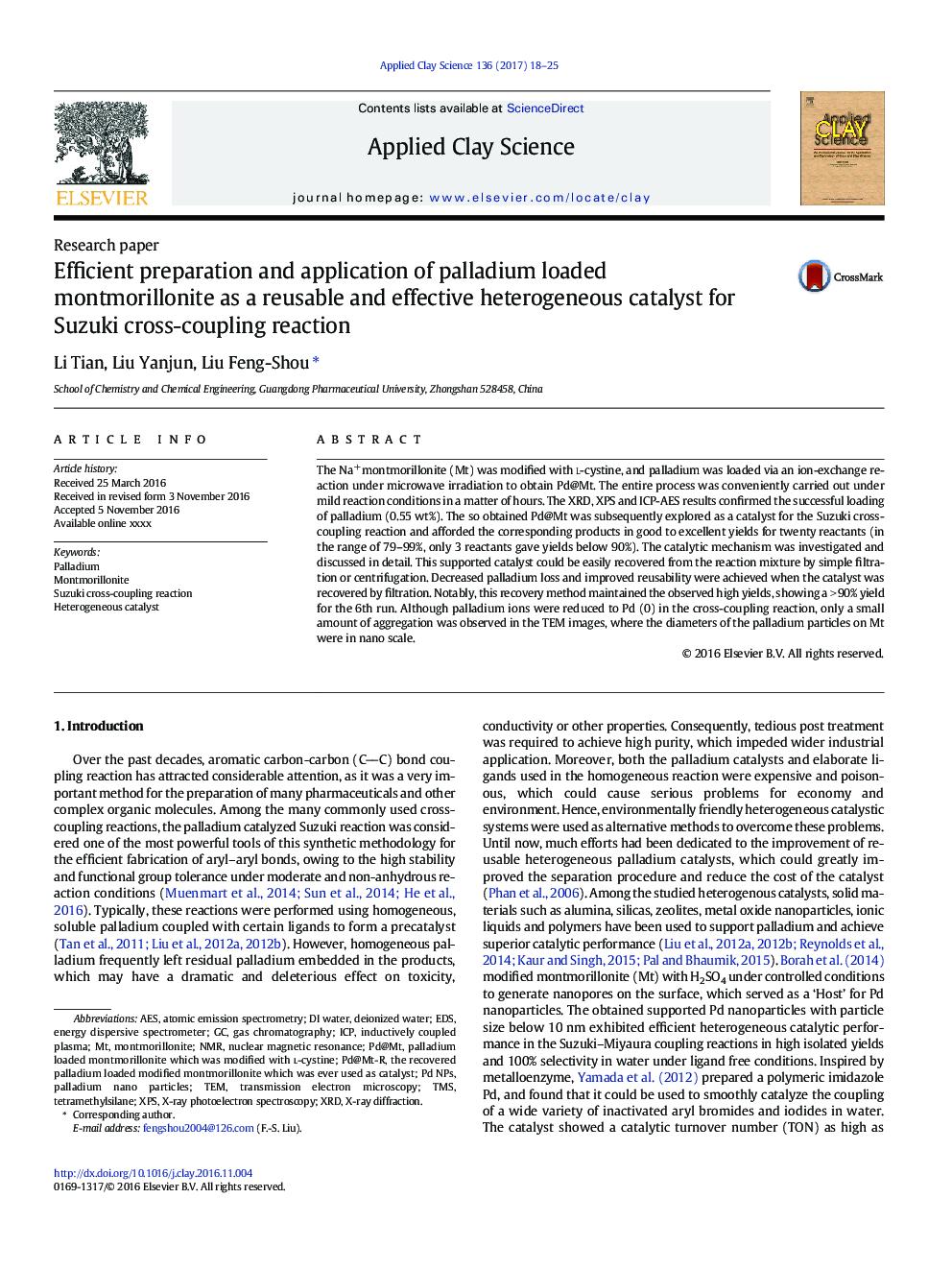| Article ID | Journal | Published Year | Pages | File Type |
|---|---|---|---|---|
| 5469094 | Applied Clay Science | 2017 | 8 Pages |
Abstract
The Na+Â montmorillonite (Mt) was modified with l-cystine, and palladium was loaded via an ion-exchange reaction under microwave irradiation to obtain Pd@Mt. The entire process was conveniently carried out under mild reaction conditions in a matter of hours. The XRD, XPS and ICP-AES results confirmed the successful loading of palladium (0.55Â wt%). The so obtained Pd@Mt was subsequently explored as a catalyst for the Suzuki cross-coupling reaction and afforded the corresponding products in good to excellent yields for twenty reactants (in the range of 79-99%, only 3 reactants gave yields below 90%). The catalytic mechanism was investigated and discussed in detail. This supported catalyst could be easily recovered from the reaction mixture by simple filtration or centrifugation. Decreased palladium loss and improved reusability were achieved when the catalyst was recovered by filtration. Notably, this recovery method maintained the observed high yields, showing a >Â 90% yield for the 6th run. Although palladium ions were reduced to Pd (0) in the cross-coupling reaction, only a small amount of aggregation was observed in the TEM images, where the diameters of the palladium particles on Mt were in nano scale.
Keywords
TMSPd NPstetramethylsilaneICPEDSnuclear magnetic resonanceAesdeionized waterTemNMRDI waterEnergy Dispersive SpectrometerAtomic emission spectrometryX-ray photoelectron spectroscopyXPSMontmorilloniteTransmission electron microscopySuzuki cross-coupling reactionPalladiumX-ray diffractionXRDinductively coupled plasmaHeterogeneous catalystGas chromatography
Related Topics
Physical Sciences and Engineering
Earth and Planetary Sciences
Geochemistry and Petrology
Authors
Li Tian, Liu Yanjun, Liu Feng-Shou,
